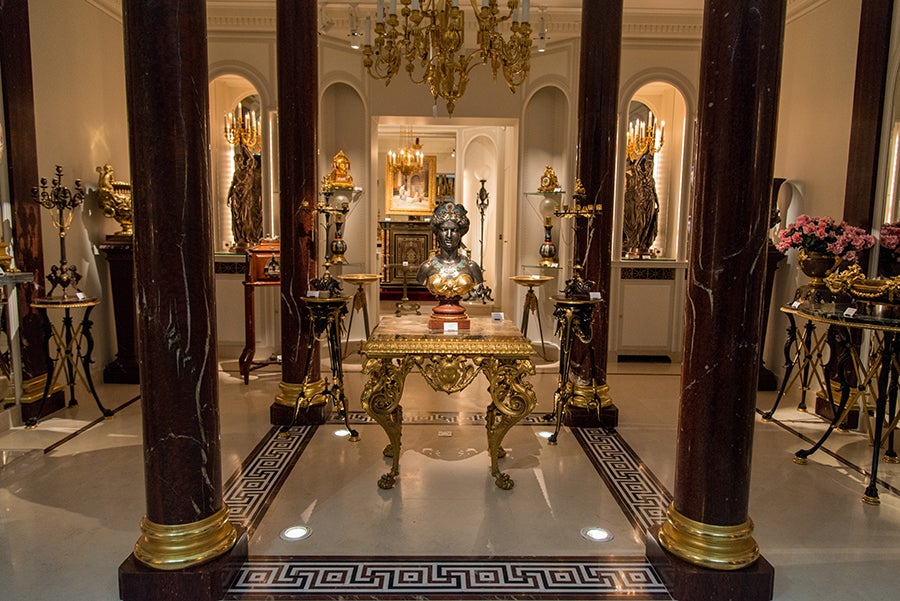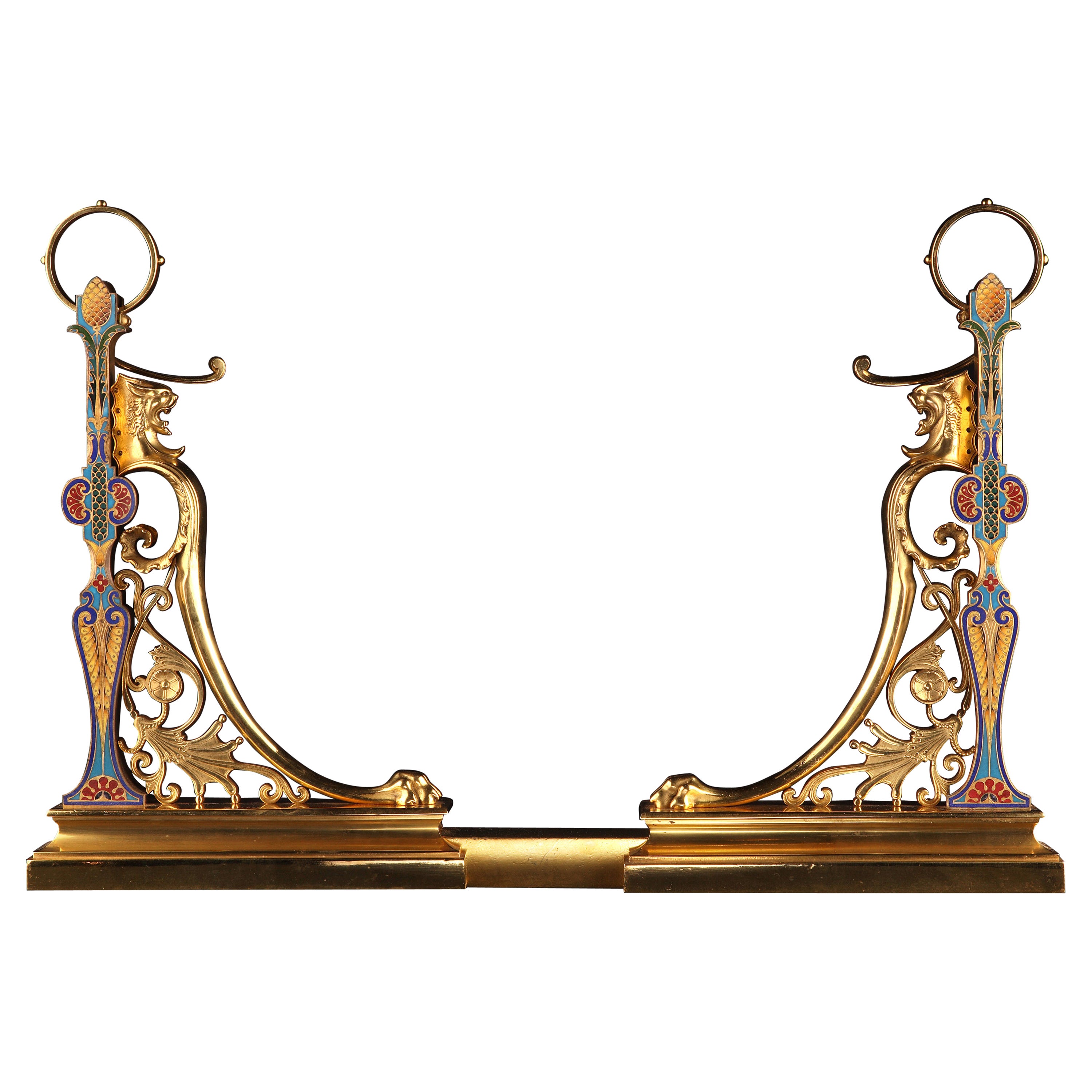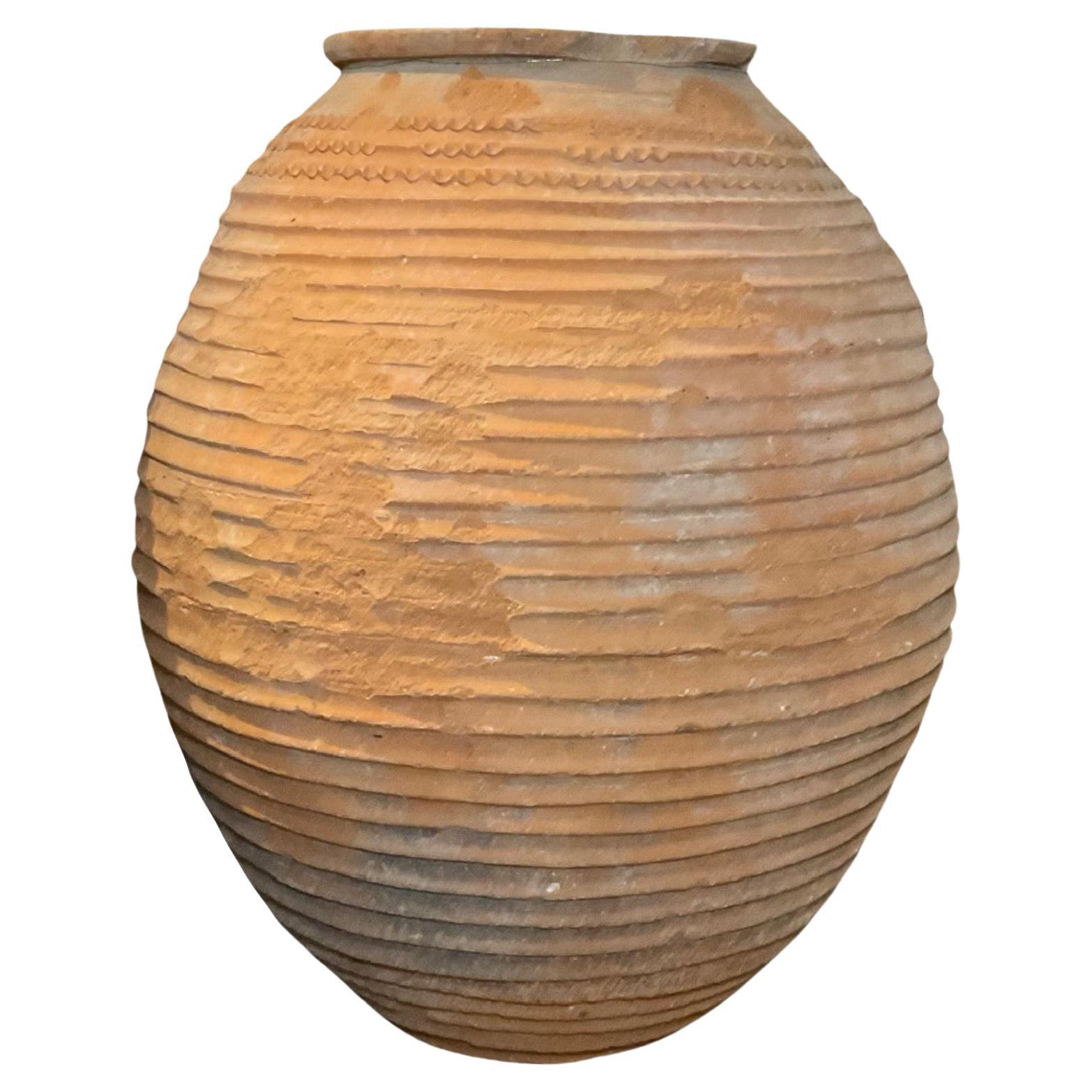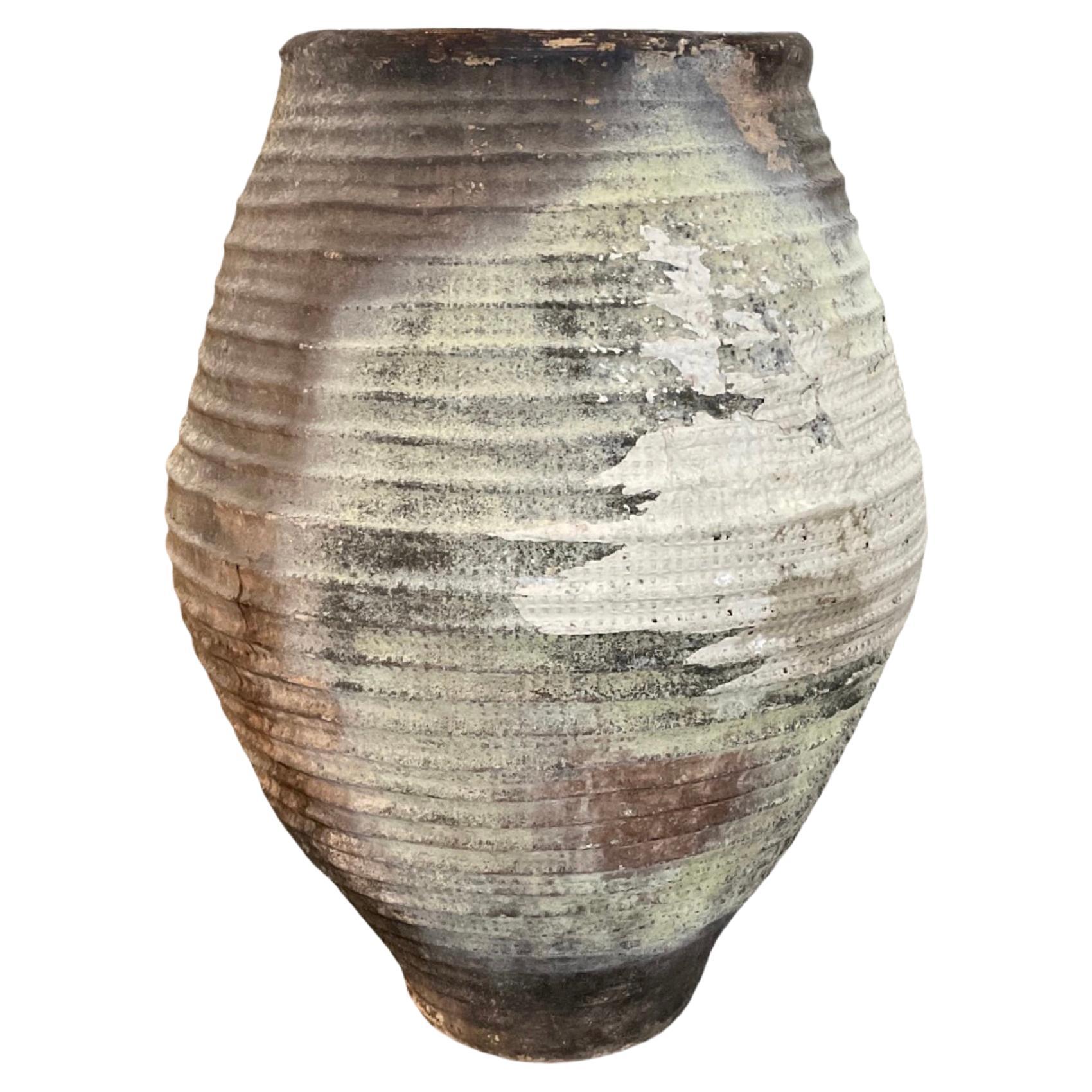Items Similar to Lovely Neo-Greek Planter Attributed to C-G Diehl, France, Circa 1870
Want more images or videos?
Request additional images or videos from the seller
1 of 11
Lovely Neo-Greek Planter Attributed to C-G Diehl, France, Circa 1870
About the Item
Circular plant pot with a double tray united by a black tripod attributed to C-G Diehl. Charming wood marquetry. A beautiful gilded bronze adornment complete this piece.
Arriving in Paris in circa 1840 Charles-Guillaume Diehl (1811-1885) founded his cabinet making and decoration firm at 19 rue Michel-le-Comte in 1885. His workshops produced elegant little pieces of furniture in rosewood and thuja and novelties with bronze and porcelain embellishments (see “Les ébénistes du XIXème siècle” ,D. LeDoux-Lebard, Ed. de l’amateur, 1982, p.164). It was his luxury boxes, however (liqueur cellarettes, cigar cabinets, games boxes, cashmere cases, jewelry cases) which assured Diehl’s renown (see “l’Art en France sous le Second Empire,” Exposition Grand-Palais, Paris, 1979, p.133). Already rewarded with a bronze medal at the Universal Exhibition of 1855 in Paris, he exhibited a jardinière with china columns and a liqueur cabinet at the Industrial Arts Exhibition in 1861.
- Attributed to:Charles-Guillaume Diehl (Cabinetmaker)
- Dimensions:Height: 40.95 in (104 cm)Diameter: 21.26 in (54 cm)
- Style:Greek Revival (In the Style Of)
- Materials and Techniques:
- Place of Origin:
- Period:
- Date of Manufacture:Circa 1870
- Condition:Wear consistent with age and use.
- Seller Location:PARIS, FR
- Reference Number:

About the Seller
4.9
Vetted Seller
These experienced sellers undergo a comprehensive evaluation by our team of in-house experts.
Established in 1997
1stDibs seller since 2018
75 sales on 1stDibs
Typical response time: <1 hour
Associations
International Confederation of Art and Antique Dealers' Associations
- ShippingRetrieving quote...Ships From: PARIS, France
- Return PolicyA return for this item may be initiated within 7 days of delivery.
More From This SellerView All
- Pair of Neo-Greek Pedestals. C.G. Diehl & J.Brandely, France, circa 1867By Lebeuf Milliet & Cie Creil Montereau, Jean Brandely, Charles-Guillaume DiehlLocated in PARIS, FRExceptional pair of neo-Greek style pedestals, made in blackened pearwood, gilded galvanic bronze and glazed earthenware. The sheath-shaped shaft is decorated with rectangular plates...Category
Antique 1860s French Greek Revival Pedestals
MaterialsBronze
- Neo-Greek Inkwell by C.G. Diehl, E. Frémiet and J. Brandely, France, Circa 1867By Emmanuel Fremiet, Charles-Guillaume Diehl, Jean BrandelyLocated in PARIS, FRSigned Diehl à Paris. Wood and silvered copper inkwell. Central drawer ornamented with an escutcheon and flanked by two small lateral drawers forming two containers, surmounted by a lid representing a nestling. Central niche ornamented with a winged creature. Inkwell flanked by two felines. Toped by a penholder representing a Moorish head resting on an eagle claw. This exceptional piece was realized thanks to the collaboration of ornemanist J. Brandely, sculptor E. Frémiet and cabinet-maker C.-G. Diehl. The motif of the fantasy creature dear to Diehl, is to be seen on the famous cabinet made by him in 1867 and now exhibited at the Metropolitan Museum of Art in New York (Inv. 1989.197). Arriving in Paris in about 1840 Charles-Guillaume Diehl (1811-1885) founded his cabinet making and decoration firm at 19 rue Michel-le-Comte in 1885. His workshops produced elegant little pieces of furniture in rosewood and thuja and novelties with bronze and porcelain embellishments (see “Les ébénistes du XIXème siècle”, D. Ledoux-Lebard, Ed. de l’amateur, 1982, p.164). It was his luxury boxes, however (liqueur cellarettes, cigar cabinets, games boxes, cashmere cases, jewelry cases) which assured Diehl’s renown (see “l’Art en France sous le Second Empire”, Exposition Grand-Palais, Paris, 1979, p.133). Already rewarded with a bronze medal at the Universal Exhibition of 1855 in Paris, he exhibited a jardinière with china columns and a liqueur cabinet at the Industrial Arts Exhibition in 1861. In collaboration with the designer Jean Brandely (active from 1867 until 1873), Diehl renovated his decorative repertory and created astonishing pieces of furniture in the Grecian style which had a dazzling success at the Universal Exhibition in Paris in 1867, where his cabinets also won a silver medal. Certain motifs were so typical of Diehl’s work that they received extensive commentary by the art critic J. Mesnard in his book “Les Merveilles de l’Exposition Universal de 1867” (vol. II, pp. 133 & 149). He writes of a table of which “the pendant bearing hooks and the fan shaped radiating motif which ornaments the entablature are engraved with love” (p. 133) and a jewelry case where “The head in fine Grecian style makes up the essential part of the fine gilt bronze ornamentation” (p. 149). For this Universal Exhibition Diehl also formed a partnership with two famous sculptors: Emile Guillemin (1841-1907) who carved the relief for a mahogany sideboard with galvanic gilt bronzes (Orsay Museum, Paris, Inv. O.A.O. 992) and Emmanuel Frémiet (1824-1910) who executed the low relief for a cedar medal cabinet...Category
Antique 1860s French Greek Revival Inkwells
MaterialsCopper
- Neo-Greek Cigar Cellarette, C.G. Diehl, E. Frémiet & J. Brandely, Circa 1867By Emmanuel Fremiet, Charles-Guillaume Diehl, Jean BrandelyLocated in PARIS, FRRare cigar humidor made in wood, with a front flap, discovering five sliding cane trays. Beautiful bronze and silver electroplated brass ornaments, such as the central niche decorated with a winged creature, surmounted on top of the cabinet with a feline. Resting on four tall legs joined by a stretcher decorated with a silvered pierced bronze incense burner. The central relief of that cellarette for cigars, with that fantasy creature, is directly inspired from the one designed by J. Brandely for the front door of the Merovingian Cabinet made by Diehl in 1867, and now preserved at the Metropolitan Museum of Art in New York (Inv. 1989.197). Arriving in Paris in about 1840 Charles-Guillaume Diehl (1811-1885) founded his cabinet making and decoration firm at 19 rue Michel-le-Comte in 1885. His workshops produced elegant little pieces of furniture in rosewood and thuja and novelties with bronze and porcelain embellishments (see « Les ébénistes du XIXème siècle »,D. Ledoux-Lebard, Ed. de l’amateur, 1982, p.164). It was his luxury boxes, however (liqueur cellarettes, cigar cabinets, games boxes, cashmere cases, jewelry cases) which assured Diehl’s renown (see « l’Art en France sous le Second Empire », Exposition Grand-Palais, Paris, 1979, p.133). Already rewarded with a bronze medal at the Universal Exhibition of 1855 in Paris, he exhibited a jardinière with china columns and a liqueur cabinet at the Industrial Arts Exhibition in 1861. In collaboration with the designer Jean Brandely (active between 1867 and 1873), Diehl renovated his decorative repertory and created astonishing pieces of furniture in the Grecian style which had a dazzling success at the Universal Exhibition in Paris in 1867, where his cabinets also won a silver medal. Certain motifs were so typical of Diehl’s work that they received extensive commentary by the art critic J. Mesnard in his book « Les Merveilles de l’Exposition Universal de 1867 » (vol. II, pp. 133 & 149). He writes of a table of which « the pendant bearing hooks and the fan shaped radiating motif which ornaments the entablature are engraved with love » (p. 133) and a jewelry case where « The head in fine Grecian style makes up the essential part of the fine gilt bronze ornementation » (p. 149). For this Universal Exhibition of 1867, Diehl also formed a partnership with two famous sculptors : Emile Guillemin (1841-1907) who carved the relief for a mahogany sideboard with galvanic gilt bronzes (Orsay Museum, Paris, Inv. O.A.O. 992) and Emmanuel Frémiet (1824-1910) who executed the low relief for a cedar medal cabinet...Category
Antique 1860s French Greek Revival Tobacco Accessories
MaterialsBrass, Bronze
- Pair of Neo-Greek Floor Lamps Attributed to G. Servant, France, Circa 1870By Georges Emile Henri ServantLocated in PARIS, FRRare pair of Greek style floor lamps made in patinated bronze attributed to G. Servant, each surmounted of a frosted glass globe engraved of stars and a Greek motif frieze. The body of the vase, decorated with Greek style patterns such as palmets, Greek motif frieze and water leaves, stands on a shaft decorated with deer heads. Fine chains are connected to a delicate butterfly. The set is based on tripod legs with lion claw feet alternating large palmets. Height : 183 cm (72 in.) ; 213 cm (83 3/4 in.) with glass shades ; Diameter : 43 cm (19 2/3in.) Georges Emile Henri Servant (1828-c.1890), who took over his father in 1855 at their foundry, rue Vieille-du-Temple, in Paris, specialized in the production of neo-Egyptian style clocks, very popular in France since 1860’s, and also the making of Greek style decorative objects. He drew considerable attention to the high quality of his bronzes at the 1855 Paris Universal Exhibition and then at the 1862 London Exhibition. At this time Servant exported up to 40% of his production, principally to the United States, where for instance, his clocks were sold with great success by Louis Tiffany Inc. or Hamann & Roche of New York. But his success came really at the 1867 Paris Universal Exhibition, where he was awarded a gold medal for his neo-Greek and Egyptian works (Les Merveilles...Category
Antique 1860s French Greek Revival Floor Lamps
MaterialsBronze
- Pair of Neo-Greek Bronze Candelabras Attributed to G.Servant, France, Circa 1870By Georges Emile Henri ServantLocated in PARIS, FRRare pair of Greek style candelabras made in patinated bronze and gilded bronze, attributed to G. Servant. Each with ten light arms topped by a heron shaped extinguisher. Decorated with various Greek style motifs such palmets, pine cones ans water leaves. Standing on a small triangular architecture presenting a theatre mask and reposing on a tripod base formed with lion paw feet. Georges Emile Henri Servant (circa 1828-1890), who took over his father in 1855 at their foundry, rue Vieille-du-Temple, in Paris, specialized in the production of neo-Egyptian style clocks, very popular in France since 1860’s, and also the making of Greek style decorative objects. He drew considerable attention to the high quality of his bronzes at the 1855 Paris Universal Exhibition and then at the 1862 London Exhibition. At this time Servant exported up to 40% of his production, principally to the United States, where for instance, his clocks were sold with great success by Louis Tiffany Inc. or Hamann & Roche of New York. But his success came really at the 1867 Paris Universal Exhibition, where he was awarded a Gold Medal for his neo-Greek and Egyptian works (Les Merveilles...Category
Antique 1870s French Greek Revival Table Lamps
MaterialsBronze
- Neo-Greek Gueridon Attributed to F. Barbedienne, France, Circa 1880By Ferdinand Barbedienne, Louis-Constant SevinLocated in PARIS, FRA similar model was exposed at the 1889 Paris Universal Exhibition ( see picture attached) Patinated and gilded bronze gueridon with four paw feet joined by X-shaped stems, attributed to Sévin and Barbedienne. Round green marble top mounted with a bronze rim adorned with oves and pearls motif. Born in 1821 and dead in Paris in 1888, Louis-Constant Sévin was apprenticed to the parisian sculptor Marneuf. In 1839, he joined the sculptor-modelors Phénix and Joyau, as designer, and designed silver-smith’s objects for famous firms like Denière, Froment-Meurice, Morel and Duponchel. During the Revolution in 1848, C. Sévin joined Morel in London, as workshop manager and designed pieces that Morel exhibited in 1851. Back in France in 1851, C. Sévin went to Limoges and designed models for the porcelain factories of Jouhanneaud and Dubois of which many pieces were exhibited at the Universal Exhibition in 1855. From this date on, he worked for Ferdinand Barbedienne as sculptor-ornemanist until the end of his life. Sévin’s works are considerable, he designed furniture bronzes for the « hôtel de La Païva ». At the London Exhibition in 1862, he was awarded a medal « pour l’excellence artistique des meubles qu’il a dessinés et qui sont exposés par Barbedienne » : for the artistic excellence of the furniture he designed and which is exhibited by F. Barbedienne. He won a second class medal at the Union centrale des Arts décoratifs Exhibition in 1863 and was awarded a gold medal as « cooperator ». F. Barbedienne said that posterity would remember Sévin’s compositions. The most extraordinary object designed by C. Sévin for F. Barbedienne, was a Renaissance style gilded bronze monumental clock...Category
Antique 1880s French Greek Revival Center Tables
MaterialsMarble, Bronze
You May Also Like
- Greece Terracotta PlanterLocated in Dallas, TXThis timeless Greek terracotta planter has been crafted from clay and fired in a kiln to form a Frost-proof, durable construction capable of withstand...Category
Antique 18th Century Planters and Jardinieres
MaterialsTerracotta
- Greece Terracotta PlanterLocated in Dallas, TXBring a touch of traditional elegance to your outdoor space with this Greece Terracotta Planter. Crafted from high-fired clay and featuring an 18th century design, this durable plant...Category
Antique 18th Century Planters and Jardinieres
MaterialsTerracotta
- Greece Terracotta PlanterLocated in Dallas, TXThis traditional terracotta planter from Greece has been crafted from natural clay and fired at high temperatures, resulting in a durable, frost-re...Category
Antique 18th Century Planters and Jardinieres
MaterialsTerracotta
- Greece Terracotta PlanterLocated in Dallas, TXThis Greek terracotta planter is crafted from high-fired clay for superior durability, frost-proofing, and long-term outdoor performance. With an 18th century design and classic char...Category
Antique 18th Century Planters and Jardinieres
MaterialsTerracotta
- Greece Terracotta PlanterLocated in Dallas, TXThis traditional Greek terracotta planter is composed of natural clay and fired at intense temperatures to generate a robust, frost-resistant construc...Category
Antique 18th Century Planters and Jardinieres
MaterialsTerracotta
- Greece Terracotta PlanterLocated in Dallas, TXThis timeless Greek terracotta planter is crafted from clay and fired in a kiln to form a durable, Frost-proof build that can endure outdoor condition...Category
Antique 18th Century Planters and Jardinieres
MaterialsTerracotta
Recently Viewed
View AllMore Ways To Browse
Antique Pieces Of Furniture
Pieces Of Antique Furniture
Jewlery Case
French 1870
Antique Jewelry Case
Antique Jewelry Cases
Antique Jewellery Cases
Greece Wood
Greek Wood
Used Jewelry Cases
Greek French Bronze
Antique Bronze Medal
Planters Bronze
French 19c
Greek Empire
Antique Bronze Planter
Antique Bronze Planters
Empire 1870





